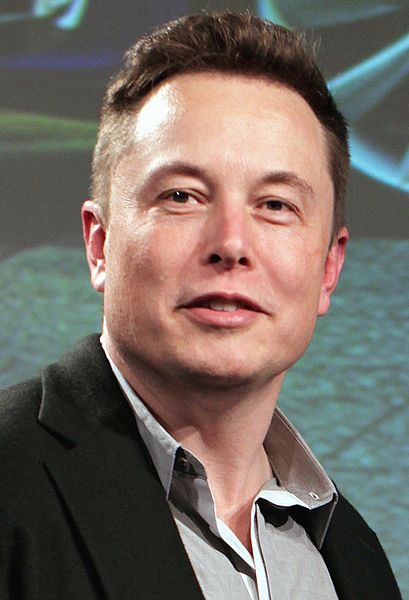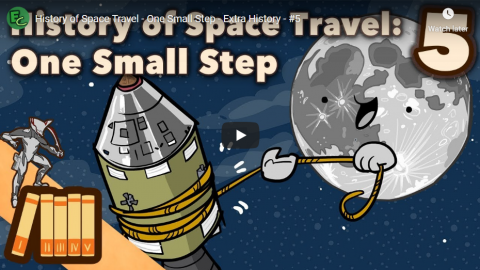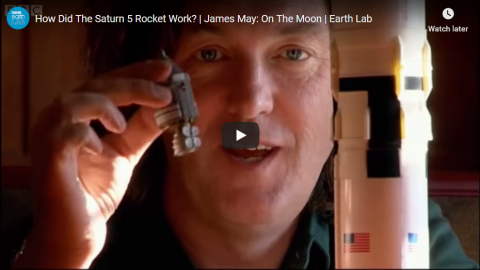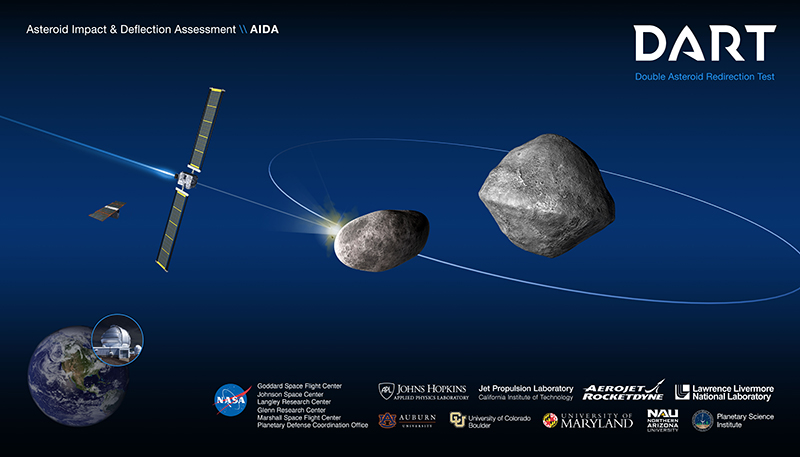The comments for that post were very active with suggestions for technological or strategic situations which would or would not make orbit-to-land operations (read: planetary invasions) unnecessary or obsolete, which were all quite interesting.
What I found most striking though was a relative confidence in how space battles would be waged in general, which I’ve seen both a little bit here in the comments and frequently more broadly in the hard-sci-fi community. The assumptions run very roughly that, without some form of magic-tech (like shields), space battles would be fought at extreme range, with devastating hyper-accurate weapons against which there could be no real defense, leading to relatively “thin-skinned” spacecraft. Evasion is typically dismissed as a possibility and with it smaller craft (like fighters) with potentially more favorable thrust-to-mass ratios. It’s actually handy for encapsulating this view of space combat that The Expanse essentially reproduces this model.
And, to be clear, I am not suggesting that this vision of future combat is wrong in any particular way. It may be right! But I find the relative confidence with which this model is often offered as more than a little bit misleading. The problem isn’t the model; it’s the false certainty with which it gets presented.
[…]
Coming back around to spaceships: if multiple national navies stocked with dozens of experts with decades of experience and training aren’t fully confident they know what a naval war in 2035 will look like, I find myself with sincere doubts that science fiction writers who are at best amateur engineers and military theorists have a good sense of what warfare in 2350 (much less the Grim Darkness of the Future Where There is Only War) will look like. This isn’t to trash on any given science fiction property mind you. At best, what someone right now can do is essentially game out, flow-chart style, probable fighting systems based on plausible technological systems, understanding that even small changes can radically change the picture. For just one example, consider the question “at what range can one space warship resolve an accurate target solution against another with the stealth systems and electronics warfare available?” Different answers to that question, predicated on different sensor, weapons and electronics warfare capabilities produce wildly different combat systems.
(As an aside: I am sure someone is already dashing down in the comments preparing to write “there is no stealth in space“. To a degree, that is true – the kind of Star Trek-esque cloaking device of complete invisibility is impossible in space, because a ship’s waste heat has to go somewhere and that is going to make the craft detectable. But detectable and detected are not the same: the sky is big, there are lots of sources of electromagnetic radiation in it. There are as yet undiscovered large asteroids in the solar-system; the idea of a ship designed to radiate waste heat away from enemies and pretend to be one more undocumented large rock (or escape notice entirely, since an enemy may not be able to track everything in the sky) long enough to escape detection or close to ideal range doesn’t seem outlandish to me. Likewise, once detected, the idea of a ship using something like chaff to introduce just enough noise into an opponent’s targeting system so that they can’t determine velocity and heading with enough precision to put a hit on target at 100,000 miles away doesn’t seem insane either. Or none of that might work, leading to extreme-range exchanges. Again, the question is all about the interaction of detection, targeting and counter-measure technology, which we can’t really predict at all.)
And that uncertainty attaches to almost every sort of technological interaction. Sensors and targeting against electronics warfare and stealth, but also missiles and projectiles against point-defense and CIWS, or any kind of weapon against armor (there is often an assumption, for instance, that armor is entirely useless against nuclear strikes, which is not the case) and on and on. Layered on top of that is what future technologies will even prove practical – if heat dissipation problems for lasers or capacitor limitations on railguns be solved problems, for instance. If we can’t quite be sure how known technologies will interact in an environment (our own planet’s seas) that we are intimately familiar with, we should be careful expressing confidence about how future technology will work in space. Consequently, while a science fiction setting can certainly generate a plausible model of future space combat, I think the certainty with which those models and their assumptions are sometimes presented is misplaced.
Bret Devereaux, “Fireside Friday: August 14th, 2020”, A Collection of Unmitigated Pedantry, 2020-08-14.
January 15, 2023
QotD: The uncertain “certainties” of war in space
September 2, 2021
Charles Stross predicts that Elon Musk will become a multi-trillionaire
Charles Stross isn’t exactly a fan of Musk’s, but he outlines why he thinks Musk is on a potentially multi-trillion dollar path:
So, I’m going to talk about Elon Musk again, everybody’s least favourite eccentric billionaire asshole and poster child for the Thomas Edison effect — get out in front of a bunch of faceless, hard-working engineers and wave that orchestra conductor’s baton, while providing direction. Because I think he may be on course to become a multi-trillionaire — and it has nothing to do with cryptocurrency, NFTs, or colonizing Mars.
This we know: Musk has goals (some of them risible, some of them much more pragmatic), and within the limits of his world-view — I’m pretty sure he grew up reading the same right-wing near-future American SF yarns as me — he’s fairly predictable. Reportedly he sat down some time around 2000 and made a list of the challenges facing humanity within his anticipated lifetime: roll out solar power, get cars off gasoline, colonize Mars, it’s all there. Emperor of Mars is merely his most-publicized, most outrageous end goal. Everything then feeds into achieving the means to get there. But there are lots of sunk costs to pay for: getting to Mars ain’t cheap, and he can’t count on a government paying his bills (well, not every time). So each step needs to cover its costs.
What will pay for Starship, the mammoth actually-getting-ready-to-fly vehicle that was originally called the “Mars Colony Transporter”?
Starship is gargantuan. Fully fuelled on the pad it will weigh 5000 tons. In fully reusable mode it can put 100-150 tons of cargo into orbit — significantly more than a Saturn V or an Energiya, previously the largest launchers ever built. In expendable mode it can lift 250 tons, more than half the mass of the ISS, which was assembled over 20 years from a seemingly endless series of launches of 10-20 ton modules.
Seemingly even crazier, the Starship system is designed for one hour flight turnaround times, comparable to a refueling stop for a long-haul airliner. The mechazilla tower designed to catch descending stages in the last moments of flight and re-stack them on the pad is quite without precedent in the space sector, and yet they’re prototyping the thing. Why would you even do that? Well, it makes no sense if you’re still thinking of this in traditional space launch terms, so let’s stop doing that. Instead it seems to me that SpaceX are trying to achieve something unprecedented with Starship. If it works …
There are no commercial payloads that require a launcher in the 100 ton class, and precious few science missions. Currently the only clear-cut mission is Starship HLS, which NASA are drooling for — a derivative of Starship optimized for transporting cargo and crew to the Moon. (It loses the aerodynamic fins and the heat shield, because it’s not coming back to Earth: it gets other modifications to turn it into a Moon truck with a payload in the 100-200 ton range, which is what you need if you’re serious about running a Moon base on the scale of McMurdo station.)
Musk has trailed using early Starship flights to lift Starlink clusters — upgrading from the 60 satellites a Falcon 9 can deliver to something over 200 in one shot. But that’s a very limited market
As they say, read the whole thing.
July 25, 2021
The Line editors clearly loved crafting their “Dicks in space!” headline
As a fellow space nerd, I welcome the editors of The Line to our number:
You’ve probably noticed by now that your Line editors are space enthusiasts. It’s been an interesting few weeks on that front. Sir Richard Branson flew out of the atmosphere, into free-fall (not zero-G, you scientific illiterates!), on a Virgin Galactic space plane. That said, he didn’t get high enough to cross the Kármán line, which, in the absence of any real international agreement on where the Earth ends and space begins, is as close as we come to a functional definition of the edge of space. (It’s an altitude of 100 km, for those wondering.) Jeff Bezos, of Amazon wealth and fame, did cross that line this week, along with three passengers, including Wally Funk, which was cool, if you’re into that sort of thing. (We are.) Bezos was riding a Blue Origin New Shepard rocket; Blue Origin is a company he founded and funded with his own gigantic wealth.
Look, let’s face facts — your Line editors are into space. We just are. But yeah, we agree that space policy is important enough and complicated enough to warrant debate. Reasonable people can have different views on this stuff. And we also agree that there are important debates to have about the accumulated wealth of billionaires, and the distorting effects that wealth can have on politics and society.
But unlike a bunch of ya’ll, we don’t get confused about a debate over income inequality and a debate over space travel. You can despise Bezos, Amazon and everything he’s done there, and still recognize that what he is doing on the space front is important. Everyone rolling their eyes at Bezos matching space flight capabilities that the Soviets and Americans achieved literally 60 years ago is allowing their desire to rack up some sweet Twitter likes with a snarky dunk blind themselves to the fact that Bezos (and Elon Musk’s SpaceX, which is way ahead of Blue Origin) aren’t just recreating earlier capabilities, they are massively improving on them.
So yeah, Blue Origin can now do what the Soviets and U.S. could do 60 years ago, but they’re doing it more safely, more efficiently and much, much more sustainably than national space agencies did. Reusability isn’t a frill, it’s a massive game-changer. And as much fun as it is to snort when these private-sector companies recreate an existing capability, do you really think they’re going to stop there?
Branson’s company could be written off as a tourism play for the affluent. Fair enough. Except that making space flight economically viable is the first step to ensuring that capability is both sustainable and more broadly accessible in the long run. Further, Bezos and especially Musk are inventing new and transformative space-flight capabilities. They are materially pushing back against the final frontier in ways that we simply have not before. It won’t matter unless we choose to do anything with these new capabilities, and your guess is as good as ours as to whether or not we will. But we could. That’s huge.
As huge as the gigantic dick-shaped rocket Bezos rode up. Yeah, yeah. We snorted, too. But, like, seriously, folks — making penis jokes about the shape of an object dictated by aerodynamic considerations isn’t quite as witty as you think: the rockets are shaped like penises because they literally have to be in order to work. Having a giggle is fine, but if you actually think you’re making a real point about misogyny and fragile male egos when you get snippy (ahem) about a schlong-shaped rocket, well, we’d love to see what happens when your very emotionally vigorous and feminist vagina-shaped space vehicle hits max Q. So long as we aren’t aboard it or in the landing area for its hurtling debris.
Our main point still stands: don’t let your cynicism and even revulsion at these guys blind you to what they’re doing. Bezos isn’t gonna stop at Yuri Gagarin-vintage accomplishments. Musk sure hasn’t. This’ll matter. It’s time to get serious. They are.
December 14, 2019
History of Space Travel – Guided by Starlight – Extra History – #6
Extra Credits
Published 12 Dec 2019What happened after we touched down on the moon? And where are we going in the future? While we may have lost the glitz and glamor of the Space Race, we have continued to make incredible progress in reaching the stars. We’ve come together to build space stations while in space, create the international space station, and started developing new technologies that could take us to Mars and beyond.
Start your Warframe journey now and prepare to face your personal nemesis, the Kuva Lich — an enemy that only grows stronger with every defeat. Take down this deadly foe, then get ready to take flight in Empyrean! Coming soon! http://bit.ly/EHWarframe
December 7, 2019
History of Space Travel – One Small Step – Extra History – #5
Extra Credits
Published 5 Dec 2019Start your Warframe journey now and prepare to face your personal nemesis, the Kuva Lich — an enemy that only grows stronger with every defeat. Take down this deadly foe, then get ready to take flight in Empyrean! Coming soon! http://bit.ly/EHWarframe
The United States was losing the space race. A number of unfortunate missteps and mistakes had hindered their progress. But the United States had also structured its space program entirely differently from the USSR. Instead of being helmed by the military, the National Aeronautics & Space Administration was created by Eisenhower with an emphasis on exploration and research. And in the end, the later but more advanced satellites will collect the data required a dream firmly placed in the American consciousness by JFK. A dream to place a man on the moon.
From the comments:
Extra Credits
19 hours ago
The plaque still gives me goosebumps in the best way possible. Hopefully one day we can live up to its promise of peace. Be good to one another. ❤️And thanks to Rebecca Ford (the voice of Lotus) for voicing space mom at the end of each of these episodes. They’ve been a blast to make and we hope that you all have enjoyed this trip to the stars.
November 29, 2019
History of Space Travel – Red Star – Extra History – #4
Extra Credits
Published 28 Nov 2019Start your Warframe journey now and prepare to face your personal nemesis, the Kuva Lich — an enemy that only grows stronger with every defeat. Take down this deadly foe, then get ready to take flight in Empyrean! Coming soon! http://bit.ly/EHWarframe
While rockets had been proven to be indispensable to the Second World War, the idea to send people up into orbit was still seen as fantasy. Space was important only as a method to further the range of missiles meant to land oceans away from their original launch point. But a man named Korolev will change all of that, with work so secretive, he will be referred to as Chief Designer for nearly his entire life. But we all know the name of his first project into space: Sputnik.
From the comments:
Extra Credits
1 day ago
We weren’t able to fit her into the episode, but the other famous first cosmonaut in space is Laika, the Soviet space dog. She was a stray who was taken in by the program to test the Sputnik 2 and some of its life support features (like a coolant fan). Unfortunately, Laika did not return from her mission alive but she’s still regarded highly in the history of space flight and has become a symbol for the space race and animal testing in general. Look her up!
I remember reading in Robert Heinlein’s Expanded Universe of the day on his tour of the Soviet Union in 1960 when he and his wife were told by a group of Red Army cadets of a Soviet rocket launch carrying a human into orbit for the first time. The story was officially denied and the capsule was said to be unmanned after all. Wikipedia says:
According to Gagarin’s biography, these rumours were likely started as a result of two Vostok missions equipped with dummies (Ivan Ivanovich) and human voice tape recordings (to test if the radio worked) that were made just prior to Gagarin’s flight.
In a U.S. press conference on February 23, 1962, colonel Barney Oldfield revealed that an uncrewed space capsule had indeed been orbiting the Earth since 1960, as it had become jammed into its booster rocket. According to the NASA NSSDC Master Catalog, Korabl Sputnik 1, designated at the time 1KP or Vostok 1P, did launch on May 15, 1960 (one year before Gagarin). It was a prototype of the later Zenit and Vostok launch vehicles. The onboard TDU (Braking Engine Unit) had ordered the retrorockets to fire to recover, but due to a malfunction of the attitude control system, the spacecraft was oriented upside-down, and the firing put the craft into a higher orbit. The re-entry capsule lacked a heat shield as there were no plans to recover it. Engineers had planned to use the vessel’s telemetry data to determine if the guidance system had functioned correctly, so recovery was unnecessary.
November 6, 2019
How Did The Saturn 5 Rocket Work? | James May: On The Moon | Earth Lab
BBC Earth Lab
Published 3 Jan 2017James May meets Harrison Schmitt, one of the last men to ride Saturn 5 and learns a bit about the science behind a rocket with six million components.
Taken From James May: On the Moon
Welcome to BBC Earth Lab! Here we answer all your curious questions about science in the world around you (and further afield too). If there’s a question you have that we haven’t yet answered let us know in the comments on any of our videos and it could be answered by one of our Earth Lab experts.
June 26, 2019
“… what’s happening now is even better than Apollo”
At Popular Mechanics, Joe Pappalardo reminds us that the 50th anniversary of the Apollo 11 lunar landing is coming up next month, but that current developments in space are worth celebrating too:
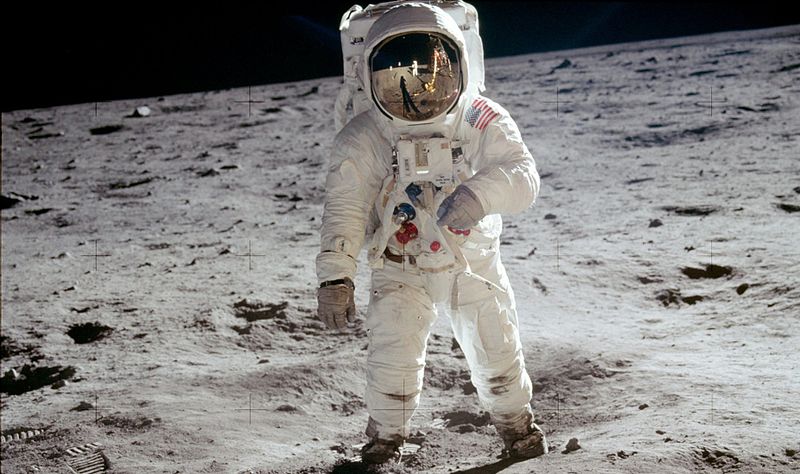
Astronaut Buzz Aldrin, lunar module pilot, stands on the surface of the moon near the leg of the lunar module, Eagle, during the Apollo 11 moonwalk. Astronaut Neil Armstrong, mission commander, took this photograph with a 70mm lunar surface camera. While Armstrong and Aldrin descended in the lunar module to explore the Sea of Tranquility, astronaut Michael Collins, command module pilot, remained in lunar orbit with the Command and Service Module, Columbia.
Apollo was born of Cold War desperation: a political exercise that paid enormous scientific and technological dividends. After the launch of Sputnik in 1957, it became vital to beat the Soviet Union to the Moon, a geopolitical urge that created an enormous budgetary effort.
The problem with politically motivated — well, anything — is that the faucet of support can be closed just as quickly as it opened. It happened to Apollo, as follow on missions were cancelled and the focus shifted to a reusable craft to service low-earth orbit. This pattern of shifting space priorities and strategies whipsawed NASA, most noticeably when the Obama administration’s cancellation of the Bush-era Constellation moon program in 2010.
But multiple private companies pursuing their niches in space have an obvious redundancy. While companies may rise and fall, the very nature of a commercial effort isn’t as dependent on government funding. If it’s worth doing, especially if it makes money, space industry will endure political shifts. The objectives of a well-run company do not change that much every four years.
That leaves today’s NASA with a choice: Do it themselves and control everything (the traditional way), or fund private companies to develop the tech the agency needs and then allow them to sell their services to any nation, company, or individual (the new way). With those services on the open market, NASA would be one of many customers for a new U.S.-based space economy.
This debate is boiling over right now. The ongoing effort to return to the moon, called Artemis (after Apollo’s sister), is becoming a lesson in the advantages of the commercial model.
[…]
If only investment guaranteed results. For those who miss bloated, government-run spaceflight, there is already a NASA spacecraft mired in the old ways of thinking. The feds have sunk a lot of money into the Space Launch System, a mega-rocket built to NASA specs for deep space missions. It was supposed to fly in 2017, but we’ll be lucky to see a first flight in 2020 — and it busted the $9.7 billion estimated budget, now costing about $12 billion.
But something happened during these SLS delays: the commercial space industry started delivering on its promises. Most visibly, private firms have been delivering supplies to the International Space Station for years and (hopefully soon) will ferry astronauts as well. Blue Origin and SpaceX has started development of crewed spacecraft able to reach to the moon and Mars. Elon Musk even sold a moon trip to a Japanese billionaire.
May 2, 2019
NASA to export bullying off the Earth to small, harmless objects in the solar system
Colby Cosh on NASA’s latest plan for “nudging” an asteroid out of its orbit:
NASA has a plan — a serious plan, which it intends to carry out pretty soon — to smash a spacecraft into an object in the solar system and intentionally change its orbit. I confess I don’t quite know why this act of awesome American techno-hubris hasn’t been bigger news. I think partly it is because the mission comes under the heading of “planetary defence” against small natural objects straying into the path of the Earth. Science reporters on that beat are easily distracted by apocalyptic fantasies, and by smirking anthropology about the actually-quite-numerous band of researchers trying to deal with this arguably-quite-important subject.
Part of the problem may be that NASA’s mission to mess with the asteroid Didymos B is hidden under a mountain of technical jargon about “kinetic impactors” and “xenon thrusters.” And part of it is surely the hard-earned professional knowledge that NASA ends up implementing about one plan for every 10 it makes. Accountants have a way of showing up with an axe at the last minute.
Still, the idea is pretty neat, and not just because it appeals to everyone’s natural appetite for destruction. The basic premise of the DART (Double Asteroid Redirection Test) is that our planet may one day face the asteroid/meteor/comet collision scenario outlined in a vast corpus of books and movies (Lucifer’s Hammer, Armageddon, Deep Impact). If that day comes, we as a species don’t want to just be winging it — so let’s go out now, find some innocent chunk of rock that isn’t bothering anybody, and see if we already have the technological capability to change its course.
This turns out not to necessarily involve Bruce Willis or Robert Duvall; mostly we just need Isaac Newton. The scheme of planetary defence now emerging from decades of speculation and effort emphasizes systematic tracking of near-Earth objects and early detection of potentially dangerous ones. If we can spot an approaching impactor soon enough, we don’t need to deliver a bundle of explosives: we can just nudge it out of the way.
Humanity has been pretty lucky that the asteroid impacts have been relatively rare since we started keeping track of important things like the planting calendar, the seasonal flooding of the rivers, and the ever-important (to the rulers) tax records. It wouldn’t take a particularly large object hurtling into the atmosphere at interplanetary speeds to ruin our collective day (year, decade, century, etc.). We think we know how to divert incoming dangerous objects … but we need to actually do it successfully before it becomes the last headline of all recorded history.
April 30, 2019
You Will Never Do Anything Remarkable
exurb1a
Published on 28 Apr 2019Illegitimi non carborundum, yo.
So.
The original line was, “If they give you ruled paper, write the other way.” As far as I can tell it’s Juan Ramón Jiménez’s.I am also now painfully aware I’ve written a half as ‘2/1’. Sorry maths.
Please note that this wasn’t intended to be a diatribe against critics or experts. They obviously play an important role. It was more directed at the recreational cynicism one comes across in daily life from time to time, generally pointed at young artists. I have had the privilege to meet plenty of people 1000x more talented than me, who are simultaneously doubting their abilities because of some stupid comment made by an unpleasant teacher or jaded family member.
If you are that artist, I really just wanted to say: You’re in good company; the Greats doubted themselves too. Don’t let the bastards get you down and I hope you make all manner of interesting and fantastic things.
The music is the 3rd movement of Big Baus Brahms’ Violin Concerto in D Major: https://youtu.be/Ev45Knhdlp8
I like that piece lots. I hope you do too.
Again, all the very best of luck in your projects.
February 10, 2018
When cinematography wins out over reality
Earlier this month, Charles Stross talked about why he’s been reading less and less science fiction lately, and touched on SF movies and (for example) why George Lucas chose to model space combat on World War 1 aircraft battles:
When George Lucas was choreographing the dogfights in Star Wars, he took his visual references from film of first world war dogfights over the trenches in western Europe. With aircraft flying at 100-200 km/h in large formations, the cinema screen could frame multiple aircraft maneuvering in proximity, close enough to be visually distinguishable. The second world war wasn’t cinematic: with aircraft engaging at speeds of 400-800 km/h, the cinematographer would have had a choice between framing dots dancing in the distance, or zooming in on one or two aircraft. (While some movies depict second world war air engagements, they’re not visually captivating: either you see multiple aircraft cruising in close formation, or a sudden flash of disruptive motion — see for example the bomber formation in Memphis Belle, or the final attack on the U-boat pen in Das Boot.) Trying to accurately depict an engagement between modern jet fighters, with missiles launched from beyond visual range and a knife-fight with guns takes place in a fraction of a second at a range of multiple kilometres, is cinematically futile: the required visual context of a battle between massed forces evaporates in front of the camera … which is why in Independence Day we see vast formations of F/A-18s (a supersonic jet) maneuvering as if they’re Sopwith Camels. (You can take that movie as a perfect example of the triumph of spectacle over plausibility at just about every level.)
… So for a couple of generations now, the generic vision of a space battle is modelled on an air battle, and not just any air battle, but one plucked from a very specific period that was compatible with a film director’s desire to show massed fighter-on-fighter action at close enough range that the audience could identify the good guys and bad guys by eye.
Let me have another go at George Lucas (I’m sure if he feels picked on he can sob himself to sleep on a mattress stuffed with $500 bills). Take the asteroid field scene from The Empire Strikes Back: here in the real world, we know that the average distance between asteroids over 1km in diameter in the asteroid belt is on the order of 3 million kilometers, or about eight times the distance between the Earth and the Moon. This is of course utterly useless to a storyteller who wants an exciting game of hide-and-seek: so Lucas ignored it to give us an exciting game of …
Unfortunately, we get this regurgitated in one goddamned space opera after another: spectacle in place of insight, decolorized and pixellated by authors who haven’t bothered to re-think their assumptions and instead simply cut and paste Lucas’s cinematic vision. Let me say it here: when you fuck with the underlying consistency of your universe, you are cheating your readers. You may think that this isn’t actually central to your work: you’re trying to tell a story about human relationships, why get worked up about the average spacing of asteroids when the real purpose of the asteroid belt is to give your protagonists a tense situation to survive and a shared experience to bond over? But the effects of internal inconsistency are insidious. If you play fast and loose with distance and time scale factors, then you undermine travel times. If your travel times are rubberized, you implicitly kneecapped the economics of trade in your futurescape. Which in turn affects your protagonist’s lifestyle, caste, trade, job, and social context. And, thereby, their human, emotional relationships. The people you’re writing the story of live in a (metaphorical) house the size of a galaxy. Undermine part of the foundations and the rest of the house of cards is liable to crumble, crushing your characters under a burden of inconsistencies. (And if you wanted that goddamn Lucasian asteroid belt experience why not set your story aboard a sailing ship trying to avoid running aground in a storm? Where the scale factor fits.)
Whatever you do, don’t go asking him about Han Solo’s claimed Kessel Run in less than 12 parsecs…
June 15, 2017
The “killer app of space tourism”
The “mile-high club” will soon be replaced by the “sixty-two-mile-high club“, says Glamour in their coverage of “Sex in Space“:
As Elon Musk announces a plan to start colonizing Mars in 2020 and space tourism companies begin offering (very pricey) trips outside the planet, space vacation is suddenly looking less like a sci-fi plot and more like a real possibility. And like any other type of vacation, one of the best parts will probably be sex. But sex in space? Is that even a thing?
To our knowledge, no one’s boldly gone there, but that hasn’t stopped the experts from guessing. Here, they answer some of our most pressing questions about the future of hooking up in space.
Is it even possible?
Sure, though keep in mind that in space capsule conditions, there’ll be considerably more fumbling around. Just getting our parts to touch could be a puzzle, since it turns out gravity is the important sex aid you didn’t even realize you were using.
“Because successful coitus for humans relies on gravity to achieve correct alignment and maintain contact with the participants’ genitals, its absence will pose a novel problem,” says OBGYN Kyrin Dunston, MD. “In addition, the thrusting motions required for successful coitus will present unique reactions in the female, where she will be propelled away from her partner during coitus, making the act very difficult.” (Though it’s pretty hilarious to picture.)
According to Dr. John Millis, Ph.D, a physicist and astronomer at Anderson University, it would be almost like two ice skaters pushing their hands against each other while standing on ice. “This two-dimensional example is complicated further by the fact that, in space, the astronauts would be moving in three-dimensions,” he says.
Will we need a whole new genre of sex toys, then?
If we want to streamline space sex, we may have to enlist technology to stop people from floating away from each other. A good space-sex device would have to attach the astronauts to their partners and the space station, says Millis.
Dr. Dunston elaborates: “That could be a jungle gym-type apparatus that allows people to position themselves appropriately to a strap system that holds them together, or clothing that accomplishes the same thing. Imaginative minds will create something ingenious, I’m sure.”
March 10, 2017
The two Elon Musks – the savvy businessman and the crony capitalist
In The Federalist, Eric Peters describes the ways Elon Musk and his SpaceX crew manage to profit from government subsidies in the process of putting their Falcon rockets into space:
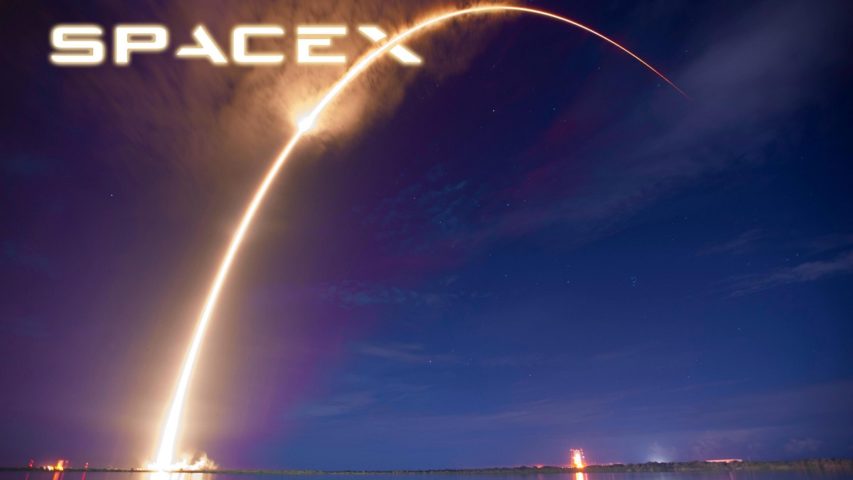
Image from SpaceX website.
Today, the National Aeronautics and Space Administration specializes in putting taxpayer dollars into the pockets of crony capitalist chieftains such as Elon Musk, whose SpaceX operation manages to get NASA to pay him to use its launch pads and other infrastructure — all provided at taxpayer expense. He also doesn’t cut NASA in when he uses its facilities — our facilities — to launch rockets carrying private cargo, meaning he effectively gets paid for it twice.
That’s once in the check he gets from the private business whose cargo his rocket is carrying; then again in the de facto subsidy he gets for the free use of NASA’s equipment at the Kennedy Space Center in Florida. Why isn’t Elon paying the freight, as opposed to blowing it up?
Incidentally, that happens a lot. Over the past five years alone, SpaceX has lost the same number of rockets as NASA did space shuttles over the 30 years it operated them. And the shuttle wasn’t a money-making machine for politically connected crony capitalists such as Musk. Taxpayers funded it, but no private citizens got a check from taxpayers.
The shuttle even made some money for taxpayers. Private businesses paid NASA to carry satellites into orbit, recovering some of the cost of building that infrastructure. The shuttle also did things useful for the public, like put the Hubble telescope in orbit. It has given humanity an unprecedented view of the universe, and not on pay-per-view.
I read a biography of Elon Musk soon after it was published … and it did a good job of pushing a more sympathetic view of its subject than the linked article above.
December 30, 2015
Elon Musk, Jeff Bezos and the future of spaceflight
Colby Cosh on the real significance of the private space companies’ successes:
The science fiction authors who originally imagined spaceflight thought it would be classically capitalistic in nature — a Wild West of chancers, gold-diggers, outlaws, and even slave-traders transposed to the skies. It ended up, in its first incarnation, being a government program. This had the merit of showing that some impossible technical problems could be solved if you threw near-infinite resources and human lives at them. But the money and will ran out before NASA got around to figuring out how to make orbital spaceflight truly routine. Reusable rockets are the important first step that NASA didn’t have time to try in the Golden Age, under the pressure of a “space race” between governments.
Musk and Bezos are trying, I think very consciously, to revive the public interest and inspiration that this race narrative once brought. When SpaceX stuck its landing this week, having previously had a couple of flops, Bezos tweeted “Welcome to the club!” Musk will not mind the cheap shot too much. Bezos is doing him a favour by making a game of it.
It is hard for us to feel passion about accounting, even when “accounting” translates to cheaper satellite technology that means subtle advances in science and cost cuts in earthbound communications tech. Anything you can turn into a mere clash of personalities will get the attention of journalists and readers more readily. Musk and Bezos are exploiting their position as two of the great stage characters of our day.
The benefit they’re really going for is to bring a slightly larger margin of the human neighbourhood within reach for spaceships assembled on orbital platforms — the only practical kind of spaceship, as it seems to have turned out. Routine orbital access means affordable space tourism; it means possible Mars missions predicated on traditional exploration/adventure motives; it means deeper scientific scrutiny and even commercial study of the Moon, the asteroids, perhaps the inner planets. It means space stations that aren’t just for handpicked careerist supermen.
It means — well, we don’t know, from this side of the future, what it means. Some grade-three kid out there may already have a “killer app” for reusable rockets that nobody has considered yet. (If the cost comes down far enough, are we certain rockets won’t re-emerge as a possibility for long-haul terrestrial travel? That’s another assumption of early SF we have discarded, perhaps carelessly!) But it is probably a good guess that the balletic SpaceX triumph will turn out, after the fact, to have been one of the biggest stories of 2015.
December 23, 2015
SpaceX Falcon 9 performs successful launch and controlled landing
William Harwood reports for CBS News:
Making its first flight since a catastrophic launch failure last June, an upgraded, more powerful SpaceX Falcon 9 rocket roared to life and shot into space Monday, boosting 11 small Orbcomm data relay satellites into orbit in a major milestone for the California rocket builder.
In a significant space “first,” the Falcon 9’s first stage fell back into the atmosphere and pulled off a powered landing at the Cape Canaveral Air Force Station, settling to a smooth tail-first touchdown in a convincing demonstration of reusability, a key requirement for lowering commercial launch costs.
In a scene resembling a launch video running in reverse, the booster quickly dropped out of a cloudy sky atop a jet of flame from one of its Merlin 1D engines, heralded by twin sonic booms that rumbled across Florida’s Space Coast. Cheers erupted in company headquarters in Hawthorne, California, as the stage settled to a smooth touchdown.
In another first, the Falcon 9 used colder, denser-than-usual liquid oxygen and kerosene propellants, a significant upgrade allowing the booster’s nine first-stage engines to generate more power, increasing their combined liftoff thrust from 1.3 million pounds to 1.5 million, or 170,000 pounds of thrust per engine.
The launch, first-stage landing and satellite deployments all appeared to proceed without a hitch, a welcome success for a company returning to flight after a disheartening failure.
“Everything we’ve seen thus far in the mission appears to be perfect,” SpaceX founder Elon Musk said in a conference call with journalists. “The satellites were deployed right on target and the Falcon 9 booster came back and landed. Looks like almost dead center on the landing pad. … As far as we can see right now, it was absolutely perfect. We could not have asked for a better mission.”
There and back again pic.twitter.com/Ll7wg2hL1G
— Elon Musk (@elonmusk) December 22, 2015

